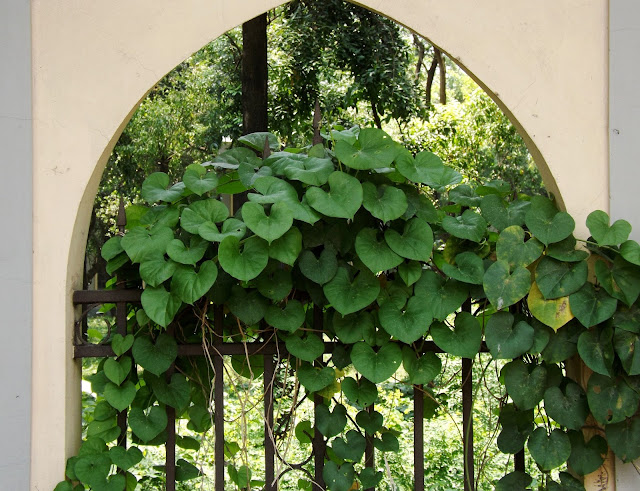Horgoja or Sea Holly, Acanthus ilicifolius
Horgoja or Sea Holly (Acanthus ilicifolius, family: Acanthaceae) is an evergreen spinous mangrove shrub with semi-woody base and shallow tap-roots, attaining a height of 3 m. Its green stems and branches have dark brown spots. Stems, as well as leaves, have long strong spines. In the urge of life it is sometimes seen to produce stilt roots. They live together like colonies in the brackish mud of the sea. The salt-tolerant plant can be found throughout the mangrove-habitated Southern coasts of Bangladesh. The armed plant is also found in South and Southeast Asian countries, like Sri Lanka, India, Pakistan, China, Philippines, Malaysia and in Northern Australia and Polynesia.
Other names: Hargoja, Horkuch kata (Bangla), Holly-leaved Acanthus, Holly Mangrove (Eng), Harikush (Sans).
Having unusual pattern and vigorous, acute spines the leaves may remind us of the leaves of Creeping thistle (Cricus arvensis). These are strange, crooked, shiny green and unevenly multi-lobed; 6-12 cm long and 3-6 cm wide, short-petioled, opposite. The tip of each lobe bears a sharp spine. There are also two spines on either side of the leaf-base. Although its young leaves have no spines at all.
Sometimes the base of the mature plants' stem can be quite swollen and that can strike some fear into the minds of somebody. Root sap is salty. Excess salt taken up through the roots is excreted through the leaves, which is then carried away by wind or water. However, sometimes, this salt is seen on leaf blades. By the by, Its original Sanskrit name 'Harikush' evolved into Bangla 'Horgoja' or 'Hargoja'.
Synonyms: Acanthus doloarius, Acanthus neoguineensis, Dilivaria ilicifolia.








অসাধারণ !
ReplyDeleteThe Kubota MU5502 4WD is a versatile tractor model designed to meet the demands of modern agriculture.Kubota prioritizes durability and ease of maintenance in its machinery. The MU5502 is designed to withstand rigorous use in demanding agricultural environments while requiring minimal maintenance, ensuring long-term reliability and performance.
ReplyDeleteeskort eryaman,
ReplyDeleteEryaman eskort bayan,
Eryaman eskort,
Eskort Bayan,
2H0M
Ataşehir eskort
ReplyDeleteKadıköy eskort
Bostancı eskort
Anadolu Yakası eskort
5W7GC